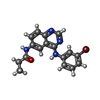Entry Database : PDB / ID : 4ll0Title EGFR L858R/T790M in complex with PD168393 Epidermal growth factor receptor Keywords / / / / Function / homology Function Domain/homology Component
/ / / / / / / / / / / / / / / / / / / / / / / / / / / / / / / / / / / / / / / / / / / / / / / / / / / / / / / / / / / / / / / / / / / / / / / / / / / / / / / / / / / / / / / / / / / / / / / / / / / / / / / / / / / / / / / / / / / / / / / / / / / / / / / / / / / / / / / / / / / / / / / / / / / / / Biological species Homo sapiens (human)Method / / / Resolution : 4 Å Authors Yun, C.H. / Eck, M.J. Journal : Proc.Natl.Acad.Sci.USA / Year : 2013Title : Mechanism for activation of mutated epidermal growth factor receptors in lung cancer.Authors : Red Brewer, M. / Yun, C.H. / Lai, D. / Lemmon, M.A. / Eck, M.J. / Pao, W. History Deposition Jul 9, 2013 Deposition site / Processing site Revision 1.0 Sep 11, 2013 Provider / Type Revision 1.1 Oct 9, 2013 Group Revision 1.2 Sep 20, 2023 Group Data collection / Database references ... Data collection / Database references / Derived calculations / Refinement description Category chem_comp_atom / chem_comp_bond ... chem_comp_atom / chem_comp_bond / database_2 / pdbx_initial_refinement_model / struct_conn / struct_ref_seq_dif / struct_site Item _database_2.pdbx_DOI / _database_2.pdbx_database_accession ... _database_2.pdbx_DOI / _database_2.pdbx_database_accession / _struct_conn.pdbx_dist_value / _struct_conn.pdbx_leaving_atom_flag / _struct_conn.ptnr1_auth_asym_id / _struct_conn.ptnr1_label_asym_id / _struct_conn.ptnr2_auth_asym_id / _struct_conn.ptnr2_label_asym_id / _struct_ref_seq_dif.details / _struct_site.pdbx_auth_asym_id / _struct_site.pdbx_auth_comp_id / _struct_site.pdbx_auth_seq_id Revision 1.3 Nov 27, 2024 Group / Category / pdbx_modification_feature / Item
Show all Show less
 Open data
Open data Basic information
Basic information Components
Components Keywords
Keywords Function and homology information
Function and homology information Homo sapiens (human)
Homo sapiens (human) X-RAY DIFFRACTION /
X-RAY DIFFRACTION /  SYNCHROTRON /
SYNCHROTRON /  MOLECULAR REPLACEMENT / Resolution: 4 Å
MOLECULAR REPLACEMENT / Resolution: 4 Å  Authors
Authors Citation
Citation Journal: Proc.Natl.Acad.Sci.USA / Year: 2013
Journal: Proc.Natl.Acad.Sci.USA / Year: 2013 Structure visualization
Structure visualization Molmil
Molmil Jmol/JSmol
Jmol/JSmol Downloads & links
Downloads & links Download
Download 4ll0.cif.gz
4ll0.cif.gz PDBx/mmCIF format
PDBx/mmCIF format pdb4ll0.ent.gz
pdb4ll0.ent.gz PDB format
PDB format 4ll0.json.gz
4ll0.json.gz PDBx/mmJSON format
PDBx/mmJSON format Other downloads
Other downloads https://data.pdbj.org/pub/pdb/validation_reports/ll/4ll0
https://data.pdbj.org/pub/pdb/validation_reports/ll/4ll0 ftp://data.pdbj.org/pub/pdb/validation_reports/ll/4ll0
ftp://data.pdbj.org/pub/pdb/validation_reports/ll/4ll0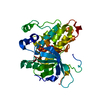
 Links
Links Assembly
Assembly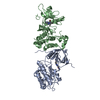

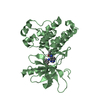
 Components
Components Homo sapiens (human) / Gene: EGFR, ERBB, ERBB1, HER1 / Production host:
Homo sapiens (human) / Gene: EGFR, ERBB, ERBB1, HER1 / Production host: 
 X-RAY DIFFRACTION / Number of used crystals: 1
X-RAY DIFFRACTION / Number of used crystals: 1  Sample preparation
Sample preparation SYNCHROTRON / Site:
SYNCHROTRON / Site:  APS
APS  / Beamline: 24-ID-E / Wavelength: 0.9792 Å
/ Beamline: 24-ID-E / Wavelength: 0.9792 Å Processing
Processing MOLECULAR REPLACEMENT
MOLECULAR REPLACEMENT Movie
Movie Controller
Controller



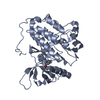

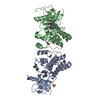
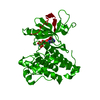
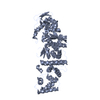


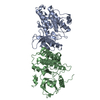
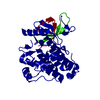
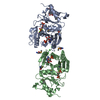
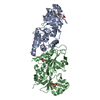
 PDBj
PDBj












